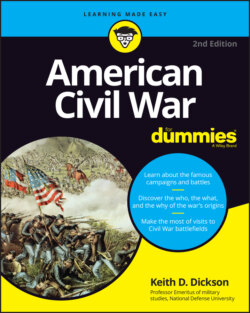Читать книгу American Civil War For Dummies - Keith D. Dickson - Страница 94
Developing Campaigns: The Art of War
ОглавлениеMilitary commanders employ the art of war by following the principles of war to develop campaigns (see the “Strategy and tactics” section earlier in this chapter to refresh your mind) that support the nation’s strategic objectives by seeking the best and quickest way to defeat the enemy. In developing a campaign, an army commander must first decide whether to conduct an offensive or defensive campaign. The goal of the offensive campaign is to break the will of the enemy through battlefield dominance, thereby destroying the military and/or political structure that allows the enemy to fight the war. The strategic offensive seeks out the enemy army, holds it in position so it cannot escape, and brings the enemy army to battle under conditions favorable to the attacker. The attacker has the advantage of making the first move with speed and decisiveness to overwhelm the enemy with superior combat power.
The ultimate goal of the defensive campaign is to protect a vital area or wear down the enemy to a point where further attacks are ineffective. An army on the defensive delays or wards off an attacking army by keeping it off balance, with the goal of not allowing the attacking army to use its superior strength. The defending army may seek to avoid battle altogether if the defender’s combat power is significantly less than that of the opposing army. Although a defensive campaign seeks to limit direct contact with the enemy’s strength, the defender still seeks to fight the attacker at a place and under conditions that offers the defender the best advantage. A commander will also use the defensive as a temporary measure to build combat power in order to shift to the offensive or lure the attacker into a disadvantageous position to be in turn attacked. This is called a counterattack.
